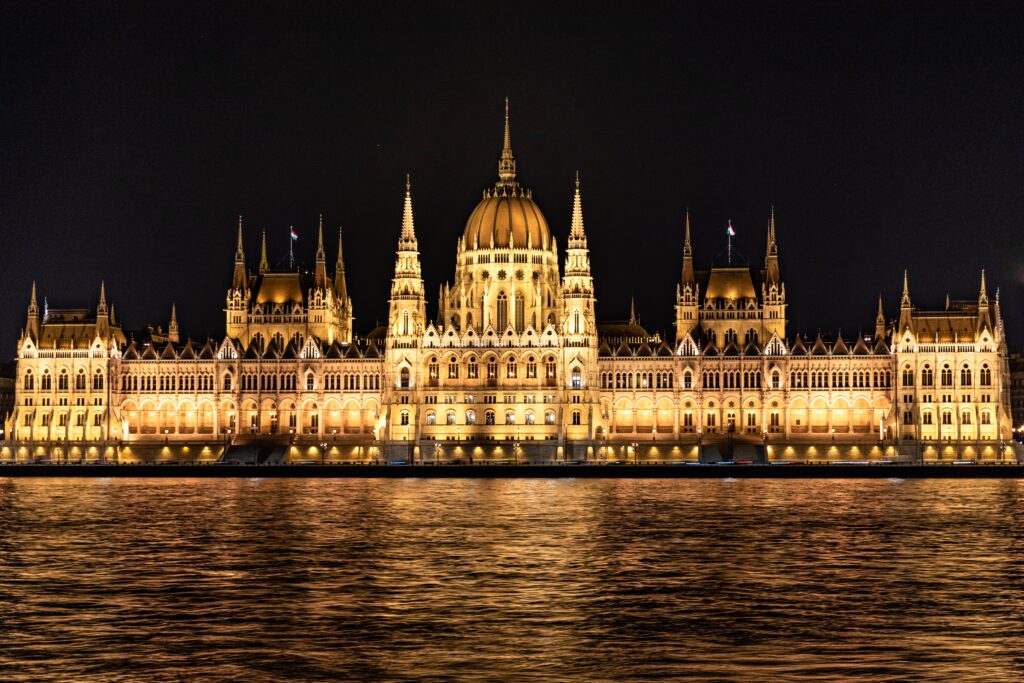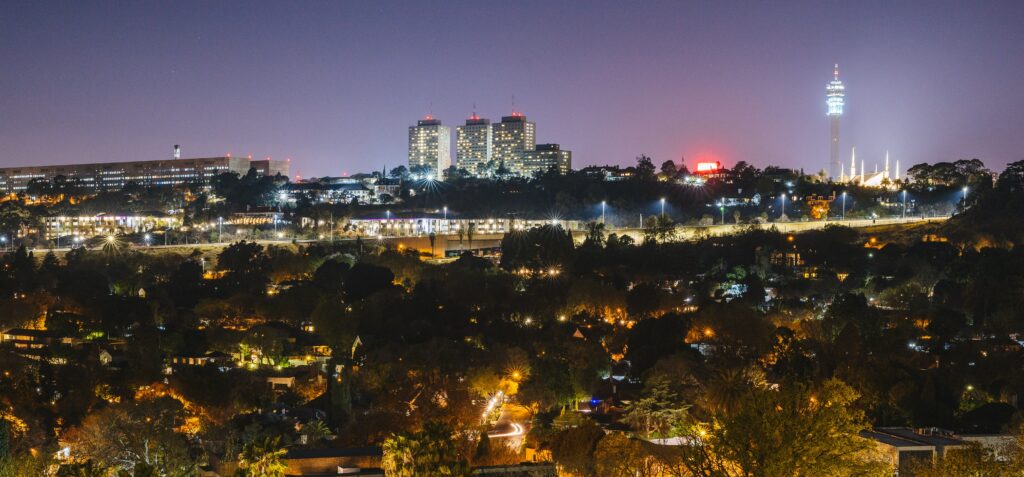Palermo, the capital city of Sicily, is a destination full of contrasts. With its rich history, vibrant culture, stunning architecture, and mouth-watering cuisine, Palermo has something to offer every traveler. As I explore this city, I am constantly amazed at the unique blend of ancient and modern, traditional and contemporary, and bustling city life and tranquil natural beauty.
Palermo is an original, exciting city, where every corner hides a new surprise. From the bustling markets filled with fresh produce and artisanal crafts to the quiet alleys lined with colorful buildings and hidden courtyards. Palermo is a city of contrasts that will leave you inspired.
Table of contents
- Rich history of Palermo
- Palermo Vibrant Culture and Traditions
- Architectural Wonders of Palermo
- Exploring Palermo Neighborhoods
- Palermo's Iconic Landmarks
- Palermo the Natural Beauty
- Palermo Thriving Arts Scene
- Experiencing Palermo Culinary Delights
- Conclusion
- FAQ
- Q: What makes Palermo a unique and exciting city?
- Q: What is the rich history of Palermo?
- Q: What can I expect to experience in Palermo's vibrant culture and traditions?
- Q: What architectural wonders can I find in Palermo?
- Q: How can I explore Palermo's diverse neighborhoods?
- Q: What are some of Palermo's iconic landmarks?
- Q: What natural beauty surrounds Palermo?
- Q: Are there any thriving arts scenes in Palermo?
- Q: What culinary delights can I savor in Palermo?
- Q: What can I take away from my visit to Palermo?
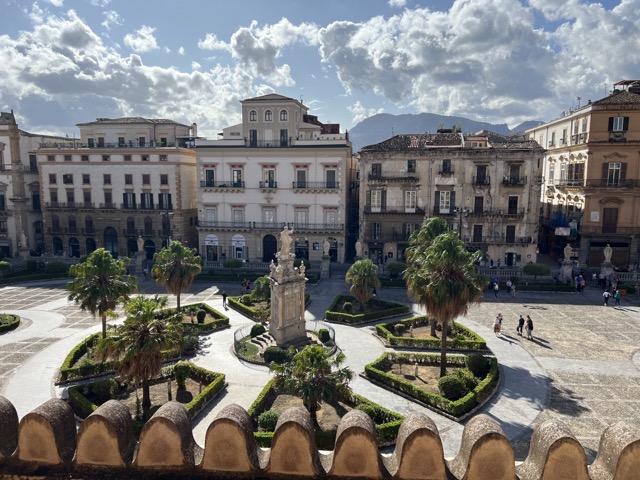
Join me as we delve into the fascinating world of Palermo, and discover a city that will capture your heart and soul. Get ready to be inspired by the beauty, history, and culture that make Palermo a true gem of Italy.
Rich history of Palermo
As I delve into the history of Palermo, it becomes evident that the city has been shaped by numerous cultures and civilizations throughout the centuries. The Phoenicians, Greeks, Carthaginians, Romans, Byzantines, Arabs, Normans, and Spanish have all left their mark on the city, resulting in a unique blend of architectural styles and cultural traditions.
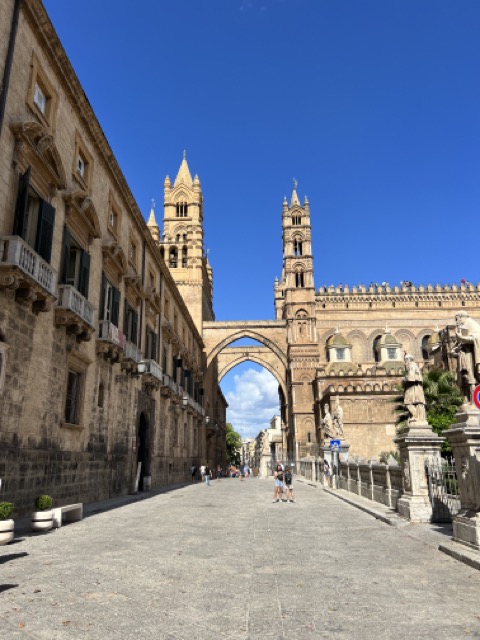
“Palermo is history, art, culture, and religion all rolled into one.”
The city’s history dates back over 2,700 years. Its strategic location on the Mediterranean made it an important center for trade and commerce. The ancient Greeks founded the city and named it “Panormos,” meaning “all-port,” due to its natural harbor.
Over time, Palermo became a melting pot of different cultures. The Arabs, who ruled the city in the 9th and 10th centuries, introduced new agricultural techniques, such as irrigation systems and new crops, which transformed the local economy. They also brought their language, religion, and architecture, including the stunning Zisa Palace and the Miramare Castle.
The Normans, who conquered Palermo in the 11th century, left behind some of the city’s most iconic landmarks, such as the Palermo Cathedral and the Palace of the Normans. The Spanish, who ruled the city from the 16th to the 18th century, also left their mark, including the stunning Quattro Canti and the imposing Teatro Massimo.
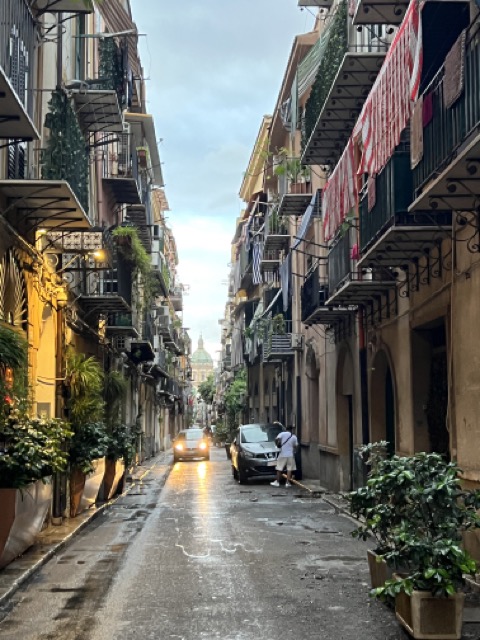
Today, Palermo stands as a testament to its rich and diverse history. Visitors can explore the city’s past through its many museums, art galleries, and historic landmarks.
- Palazzo dei Normanni
- Cathedral of Palermo
- Palazzo Abatellis
- Chiesa di San Giovanni degli Eremiti
- Museo Archeologico Regionale
Exploring these iconic landmarks is an experience not to be missed.
Palermo Vibrant Culture and Traditions
Palermo is a city that truly comes alive with its vibrant culture and rich traditions. From its unique cuisine and festivals to its art and music, Palermo offers a sensory experience like no other.
One of the highlights of Palermo’s culture is its food. The city is famous for its street food, including arancini, panelle, and sfincione. These delicious snacks are perfect for a quick bite on the go, but for a more substantial meal. Try some of Palermo’s traditional dishes, such as pasta con le sarde, caponata, and cazzilli. And of course, no trip to Palermo would be complete without trying some of the freshest seafood you’ll ever taste.
Palermo is also home to several festivals throughout the year, the most famous of which is the Feast of Santa Rosalia in July. This festival celebrates the patron saint of Palermo and includes a stunning procession through the city streets, ending at the cave where Santa Rosalia is said to have lived as a hermit.
But Palermo’s culture is not just about food and festivals. The city is also a hub for art and music. The Teatro Massimo is one of the largest opera houses in Europe and offers a world-class program of performances throughout the year. Meanwhile, the Palazzo dei Normanni is home to stunning mosaics and frescoes that showcase Palermo’s rich artistic heritage.
Finally, no exploration of Palermo’s vibrant culture and traditions would be complete without a visit to the bustling markets, such as the Ballarò Market and the Vucciria Market. Here, you can soak up the sights, sounds, and smells of Palermo as you browse stalls selling everything from fresh produce and seafood to clothing and souvenirs.
Palermo’s culture and traditions are woven into the fabric of the city and offer a truly unique experience to anyone who visits.
Architectural Wonders of Palermo
Palermo is a city renowned for its stunning architectural landmarks that showcase the influences of various ancient civilizations. As I explored the city, I found myself in awe of the magnificent structures that adorned its streets. From Norman Palaces to Baroque churches, Palermo’s architecture is truly a wonder to behold.
The Palermo Cathedral
One of the most iconic landmarks in Palermo is its breathtaking cathedral. This architectural masterpiece is a combination of different styles, including Norman, Gothic, Baroque, and Neoclassical. I was mesmerized by the intricate details of the façade, the towering bell tower, and the majestic nave that leads to the stunning apse and crypt. The Palermo Cathedral is not to be missed.
Quattro Canti
The Quattro Canti, also known as the Four Corners, is a beautiful Baroque square that perfectly embodies the city’s lively and colorful character. The square features four stunning façades, each representing one of the four seasons, the four Spanish kings of Sicily, and the four patron saints of Palermo. This architectural gem is a unique and impressive marvel which I found breathtaking.
Teatro Massimo
The Teatro Massimo is one of the largest and most renowned opera houses in Europe. This architectural masterpiece, built in the late 1800s, is a magnificent example of the neoclassical style and features an impressive marble façade, imposing columns, and a grand dome. The interior is equally stunning with intricate frescoes, ornate chandeliers, and plush seating. Visiting the Teatro Massimo left me feeling awestruck.
Byzantine Mosaics
The Cappella Palatina is a magnificent example of Byzantine architecture and features some of the most beautiful mosaics in the world. The chapel’s intricate details and gold embellishments are a testament to the skill and artistry of the craftsmen who built it. I was amazed by the intricate mosaics that adorned the chapel walls and ceiling, showcasing the city’s rich cultural heritage.
Conclusion
Exploring Palermo’s architectural wonders is a truly awe-inspiring experience. The city’s unique blend of different styles is a testament to the diverse cultures and civilizations that have left their mark on it. From the Palermo Cathedral to the Teatro Massimo, each landmark has its own character and story to tell. Palermo’s architecture is a true reflection of the city’s rich history and cultural heritage.
Exploring Palermo Neighborhoods
As I wander through the streets of Palermo, I can’t help but be struck by the diversity of its neighborhoods. Each has its own unique atmosphere. Exploring them all is a must for anyone seeking to truly experience the city’s soul.
The Historic Center of Palermo
The heart of Palermo is its historic center, a warren of narrow, winding alleys filled with baroque palaces, churches, and markets. Here, you’ll find the iconic Quattro Canti, a stunning intersection adorned with statues and fountains. Take a stroll through the nearby Ballarò market, where vendors hock fresh produce, spices, and street food like pane ca meusa, a savory sandwich of spleen and lung.
La Kalsa
To the west of the historic center lies La Kalsa, a former Arab quarter that’s home to some of Palermo’s most impressive architecture. Check out the stunning Palazzo Steri, a Gothic palace that now houses the University of Palermo, or the imposing Palermo Cathedral, with its blend of Gothic, Norman, and baroque styles. On the weekends, head to Piazza Marina, a leafy square where locals gather to relax and socialize.
Albergheria
East of the historic center, you’ll find Albergheria, a neighborhood known for its winding streets and bustling markets. Stop by the Mercato di Capo, one of the oldest and liveliest markets in Palermo, where vendors sell everything from fresh fish to handmade crafts. For a more low-key experience, head to the peaceful Giardino Garibaldi, a lovely park filled with fountains and flowers.
Monte di Pietà
In the shadow of the Teatro Massimo, you’ll find the Monte di Pietà neighborhood, where many of Palermo’s artists and writers live and work. Take a stroll through the narrow streets and you’ll see countless examples of the city’s vibrant street art scene, from colorful murals to politically charged graffiti. Stop by the Botanical Garden, a lush oasis in the heart of the city.
Mondello
For a taste of Palermo’s seaside charm, head to Mondello, a picturesque beachside neighborhood about 20 minutes outside the city center. With its crystal-clear waters and soft, white sand, Mondello is a popular spot for swimming, sunbathing, and people-watching. Grab a gelato from one of the many beachside vendors and soak up the sun.
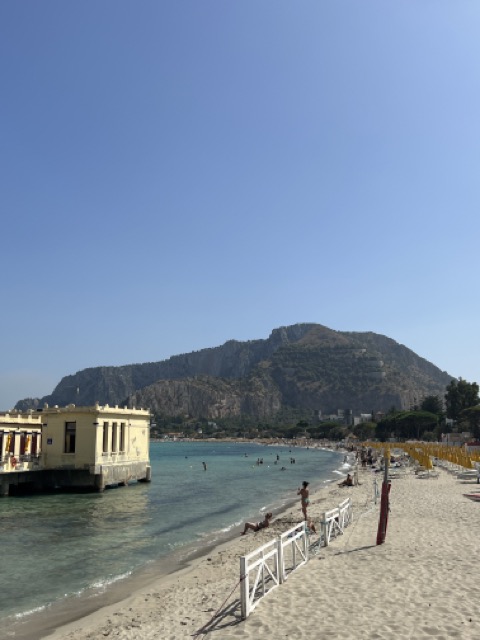
No matter which neighborhood you choose to explore, you’re sure to be captivated by Palermo’s unique blend of history, culture, and charm. So why wait? Come discover this amazing city for yourself.
Palermo’s Iconic Landmarks
As I continue my exploration of Palermo, I can’t help but be awestruck by the city’s iconic landmarks. These incredible structures have stood the test of time, bearing witness to Palermo’s rich history and cultural heritage.
The Palermo Cathedral
A true masterpiece of Norman architecture, the Palermo Cathedral is a sight to behold. Its imposing facade is adorned with intricate carvings and statues, while its interior houses beautifully frescoed chapels and tombs of past kings.
“The Palermo Cathedral is truly an awe-inspiring sight, showcasing the city’s rich history and architectural prowess.”
The Teatro Massimo
The largest opera house in Italy and one of the largest in Europe, the Teatro Massimo is a marvel of neoclassical architecture. With its grand chandeliers, ornate balconies, and plush seating, it’s no wonder it’s considered one of Palermo’s top attractions.
The Quattro Canti
Located at the intersection of two of Palermo’s main thoroughfares, the Quattro Canti is a stunning example of baroque architecture. Its four facades represent the four seasons, the four Spanish kings of Sicily, and the four patron saints of Palermo.
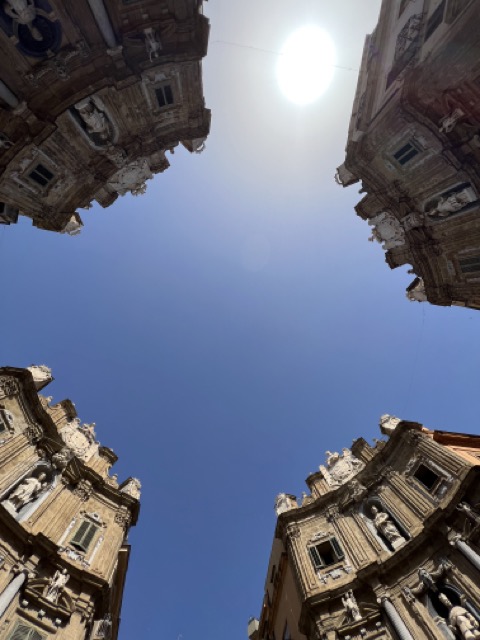
These iconic landmarks are just a few examples of the breathtaking architecture that can be found throughout Palermo. Each one is a testament to the city’s unique blend of cultural influences and creative spirit. It’s no wonder Palermo has captured the hearts of so many visitors.
Palermo the Natural Beauty
As I wandered through the streets of Palermo, I was struck by the city’s unique blend of ancient architecture and natural beauty. In addition to its rich history and vibrant culture, Palermo boasts some of the most stunning natural landscapes I have ever seen.
One of the highlights of my trip was visiting the nearby mountains, where I was treated to breathtaking views of the lush greenery and rolling hills. The air was fresh and invigorating, and I felt renewed by the tranquility of the surroundings.
Another must-see natural wonder in Palermo is the stunning Mondello beach. With its crystal-clear waters and white sand, it’s the perfect place to soak up the sun and relax after a day of exploring the city.
Whether you’re looking for a peaceful retreat in the mountains or a day of fun in the sun at the beach, Palermo has something for everyone. Its natural beauty is truly a sight to behold, and I feel so fortunate to have experienced it firsthand.
Palermo Thriving Arts Scene
As I explore Palermo, I am captivated by the city’s thriving arts scene. From its elegant museums to its vibrant street art, Palermo celebrates creativity in all its forms.
The Galleria d’Arte Moderna showcases works by Sicilian artists from the 19th century to the present day, while the Museo della Marionetta houses a captivating collection of traditional Sicilian puppetry.
Meanwhile, Palermo’s streets are alive with colorful murals and graffiti, reflecting the city’s contemporary energy. I am particularly drawn to the works of street artist “Mr. Klevra,” whose whimsical, thought-provoking pieces adorn walls throughout the city.
At night, Palermo’s theaters come alive with performances ranging from opera to contemporary dance. The Teatro Massimo, one of the largest opera houses in Europe, is a must-visit for any arts lover. Its grandeur and history are enough to take my breath away.
Whether you’re a lifelong art aficionado or simply appreciate the beauty of creative expression, Palermo’s thriving arts scene is sure to inspire and delight you.
Experiencing Palermo Culinary Delights
When it comes to food, Palermo offers a true feast for the senses. The city’s unique and diverse cuisine is a reflection of its complex history and cultural influences, making it a culinary destination like no other. From street food to high-end restaurants, Palermo has something to offer for every taste and budget.
Street Food: Flavor in Every Bite
One of the best ways to experience Palermo’s culinary scene is by trying its street food. Palermo’s street food is world-renowned, and for a good reason. The city’s vendors offer a vast array of delicious treats, from arancini, savory rice balls filled with meat or cheese, to panelle, fried chickpea flour fritters. You can also find sfincione, a type of thick Sicilian pizza, and cazzilli, potato croquettes flavored with mint and topped with breadcrumbs.
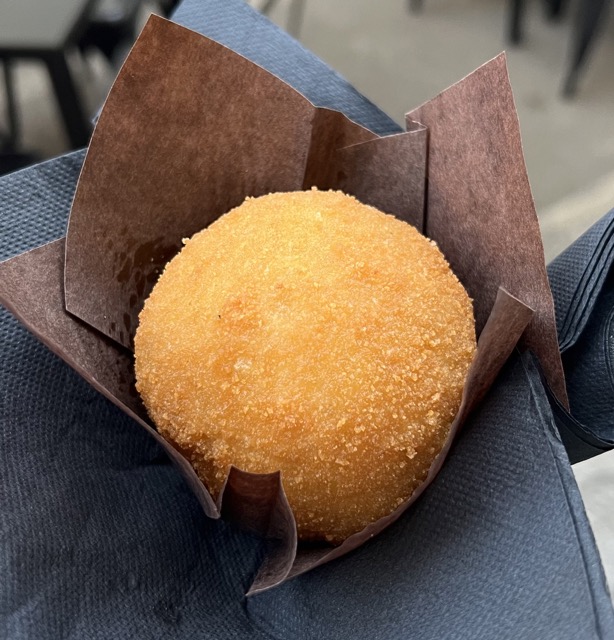
Don’t be afraid to venture into one of the many street markets to sample some of the local delicacies. The Ballarò market is a great place to start, filled with vendors selling fresh produce, seafood, and street food. Here you can try the panelle, a quintessential Palermo street food.
Seafood: Fresh from the Mediterranean
Being a coastal city, Palermo has an abundance of fresh seafood. The Mediterranean Sea provides the city with an array of fish and shellfish, which are the main ingredients in many of Palermo’s traditional dishes. You can try spaghetti ai ricci, a dish made with sea urchin, garlic, and chili or pasta con le sarde, a pasta dish with fresh sardines, pine nuts, and raisins.
For a more traditional experience, head to the Antica Focacceria San Francesco, a historic restaurant that has been serving Palermo’s locals and visitors since 1834. Here you can try the famous pasta con le sarde, along with other traditional dishes like caponata, a sweet and sour eggplant dish, and fritto misto di mare, a mixed seafood platter.
Desserts: Sweet Endings
No meal is complete without dessert, and Palermo has some of the best sweets and pastries in Italy. Cannoli, the city’s most famous dessert, is a tube-shaped fried pastry filled with sweet ricotta cheese and candied fruit. You can also try cassata, a cake made with ricotta cheese, marzipan, sponge cake, and candied fruit or gelato, which is available in many different flavors.
For a truly unique experience, head to Pasticceria Oscar, a historic pastry shop in the heart of Palermo, which has been serving locals and visitors since the early 1900s. Here you can try some of the best cannoli in the city, along with other traditional sweets and pastries.
Palermo’s culinary scene is as unique and flavorful as the city itself. With its diverse range of street food, high-end restaurants, fresh seafood, and sweet desserts, Palermo has something to offer for every palate. So come hungry, and let your taste buds guide you on a culinary journey through this exciting city.
Conclusion
Exploring Palermo has been an unforgettable experience. This vibrant city is full of contrasts, from its ancient origins to its modern arts scene, and it has something to offer for every traveler. Palermo’s rich history is visible in its stunning architecture, from the Norman palaces to the Byzantine mosaics. The city’s neighborhoods are diverse and unique, offering different atmospheres and hidden gems to discover. But Palermo is not just a city of history and culture; it also has a thriving culinary scene that features mouth-watering street food and exquisite seafood dishes. As I explored Palermo’s museums, galleries, and iconic landmarks, I was struck by the city’s creative spirit and the passion of its people. And beyond the city, the natural beauty of the nearby mountains and beaches is breathtaking. In conclusion, Palermo is a city that inspires and excites. Its contrasts, culture, and cuisine make it a must-visit destination for any traveler. I cannot wait to return to Palermo and continue the journey of discovery in this original and exciting city.
FAQ
Q: What makes Palermo a unique and exciting city?
A: Palermo is a city full of contrasts, where ancient history meets modern culture. Its vibrant traditions, stunning architecture, and exquisite cuisine make it an exciting destination to explore.
Q: What is the rich history of Palermo?
A: Palermo has a fascinating history, dating back to its ancient origins as a Phoenician settlement. It has been influenced by various civilizations throughout the centuries, including the Greeks, Romans, Arabs, Normans, and Byzantines.
Q: What can I expect to experience in Palermo’s vibrant culture and traditions?
A: In Palermo, you can immerse yourself in a vibrant culture that celebrates its unique traditions. From delicious street food to colorful festivals and impressive art, Palermo offers a rich cultural tapestry to explore.
Q: What architectural wonders can I find in Palermo?
A: Palermo is home to stunning architectural marvels, such as the majestic Palermo Cathedral, with its mix of Norman, Gothic, and Byzantine styles. You can also admire the intricate mosaics of the Palatine Chapel and the baroque splendor of the Church of Santa Caterina.
Q: How can I explore Palermo’s diverse neighborhoods?
A: Take a leisurely stroll through Palermo’s neighborhoods, each offering a unique atmosphere and hidden gems to discover. From the bustling markets of Vucciria to the elegant streets of Kalsa and the trendy district of La Kalsa, there’s something for everyone.
Q: What are some of Palermo’s iconic landmarks?
A: Don’t miss the chance to visit Palermo’s iconic landmarks, including the grand Teatro Massimo, one of the largest opera houses in Europe, and the Quattro Canti, a picturesque square adorned with elaborate baroque statues.
Q: What natural beauty surrounds Palermo?
A: Palermo is blessed with natural beauty, from the crystal-clear waters and sandy beaches of Mondello to the lush landscapes of the nearby mountains. Nature enthusiasts can explore the stunning Zingaro Nature Reserve or hike in the Madonie Mountains.
Q: Are there any thriving arts scenes in Palermo?
A: Absolutely! Palermo boasts a thriving arts scene with numerous museums, galleries, and vibrant street art. Visit the contemporary art museum GAM, explore the Palazzo Abatellis, and wander the streets adorned with striking murals.
Q: What culinary delights can I savor in Palermo?
A: Palermo is a paradise for food lovers. Indulge in famous street food like arancini (stuffed rice balls) and panelle (chickpea fritters), feast on fresh seafood at the bustling markets, and savor traditional dishes like pasta con le sarde (pasta with sardines).
Q: What can I take away from my visit to Palermo?
A: A visit to Palermo is a journey of discovery that will leave you inspired and enriched. You will experience a unique blend of history, culture, architecture, and culinary experiences that will create lasting memories. Come and be captivated by Palermo’s charm!

